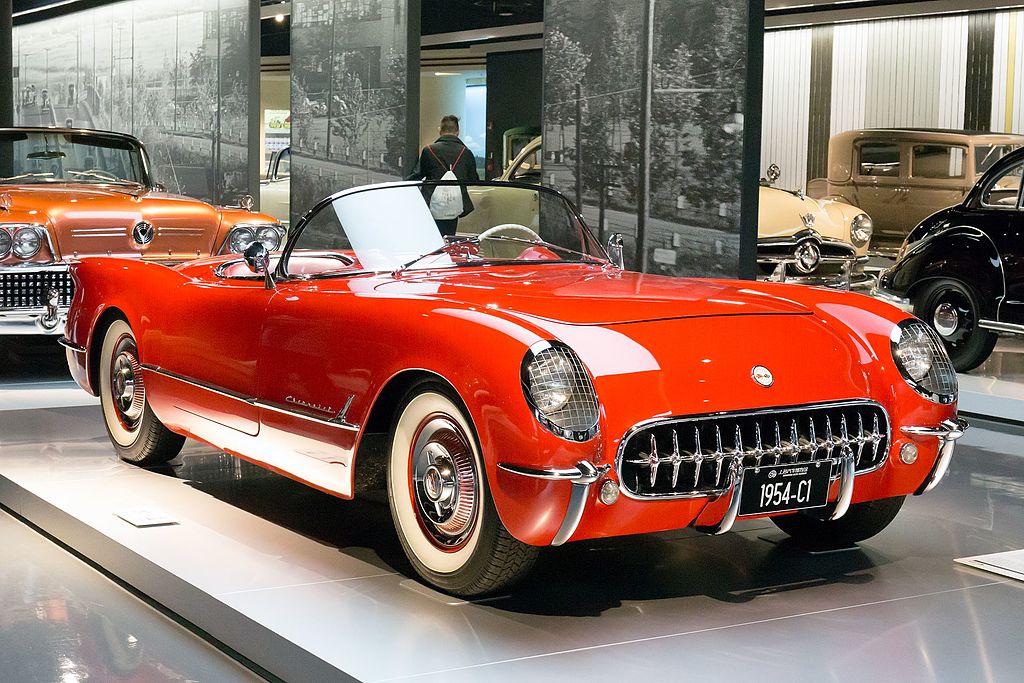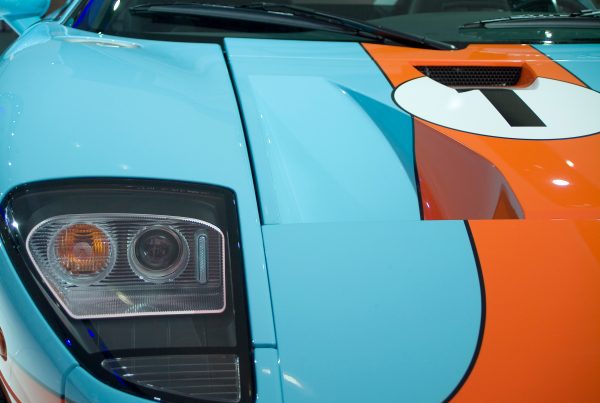Dating back more than 60 years, the Corvette has awed American automotive enthusiasts and become one of the most recognized and revered cars globally. The first-generation Chevrolet Corvette––popularly known as the C1––was debuted in 1953 at the General Motors Motorama events in New York’s Waldorf Astoria hotel.
While today, the Corvette is known for being built on the Bowling Green Assembly––the only plant in the world to manufacture Corvettes––it started from humble beginnings on an assembly line in Flint, Michigan, in 1953.
Introducing the First Generation of the Corvette
Born from the mind of legendary car designer Harley Earl, the Chevy Corvette drew inspiration from numerous sources. One particular source that Earl drew inspiration from was the European sports cars popularized by American GIs after World War II. Another design inspiration was the Nash-Healey, a two-seat luxury sports car from Nash Motors.
From these two inspirations, Earl and his team created “Project Opel” in the early 1950s, which eventually became the original Corvette we all know today.
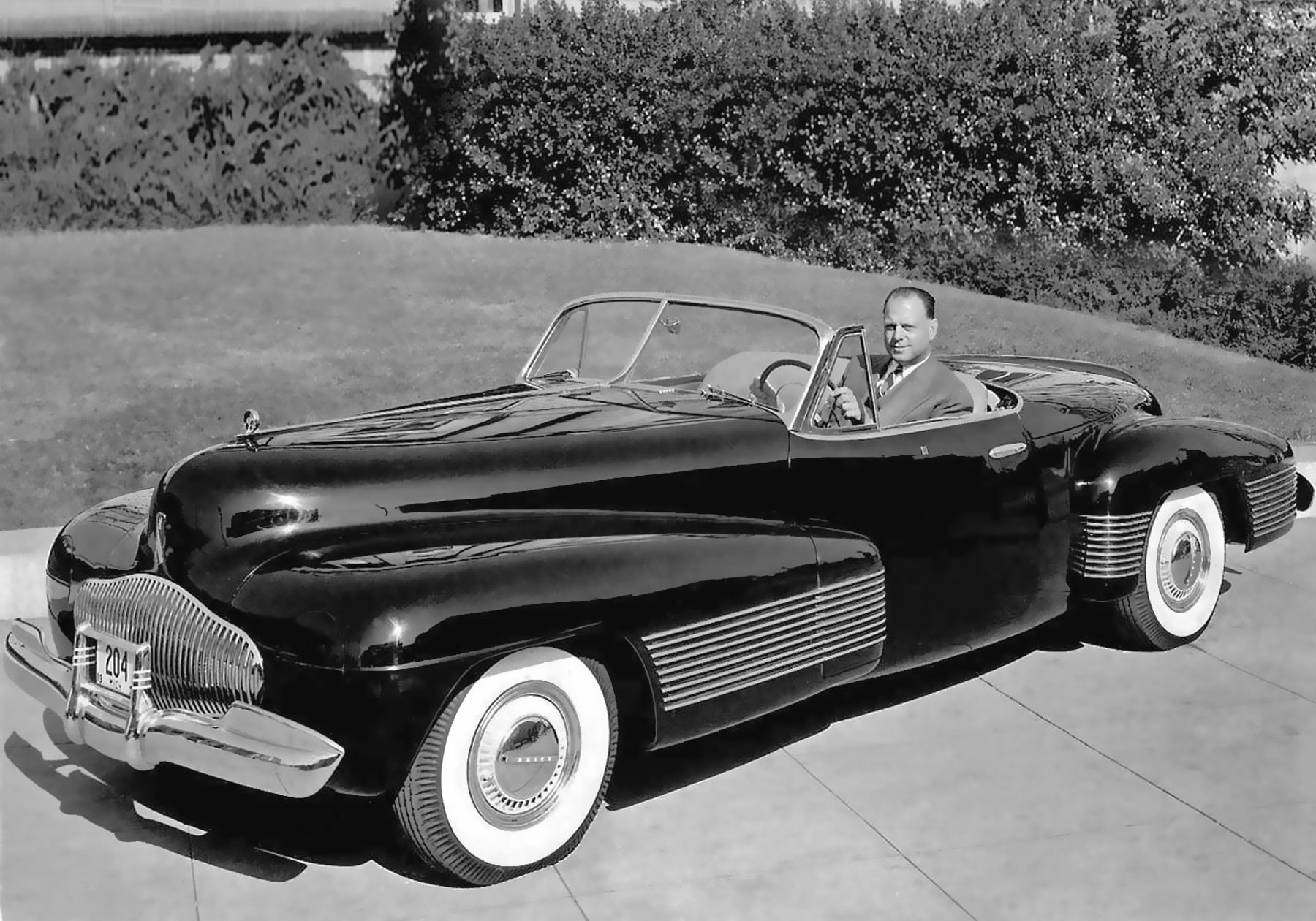
It Takes a Village
Another notable member of the Corvette team was the “Father of the Corvette” Zora Arkus-Duntov, the head Corvette engineer. Duntov joined the team after seeing the original car at the Motorama event in New York City. He became the person responsible for much of the car’s innovations, including its racing success and the Grand Sport program’s implementation.
In 1956, Duntov and his team set a stock car record at the Pike’s Peak Hill Climb and Daytona Beach by hitting 150 mph in the flying mile. The Grand Sport program was launched in the final year of the C1 Corvette in 1962. Duntov’s program was focused on creating a lightweight racing Corvette that could compete against established marquees. Only five original Grand Sports cars were built with a 550-horsepower aluminum small-block V8 engine.
Due to their exclusivity, these incredibly rare cars ended up in the hands of private collectors.

1953: The First Production
Corvette rolled off of a makeshift assembly line in Flint, Michigan, in the heat of summer on June 30, 1953. The initial batch of cars was limited to only 300 units of all black canvas soft tops, paired with the Polo White exterior color scheme. Under the hood was a 150 horsepower 3.9 L I6 engine with a two-speed automatic transmission.
Earl’s design for the C1 Corvette was nothing short of iconic. The immediately recognizable features included tight and compact styling, white-walled wheels, taillights that protrude in the classic 1950’s styling, and a unique chrome grille. GM used fiberglass instead of a steel body to make one of the most revolutionary lightweight cars.
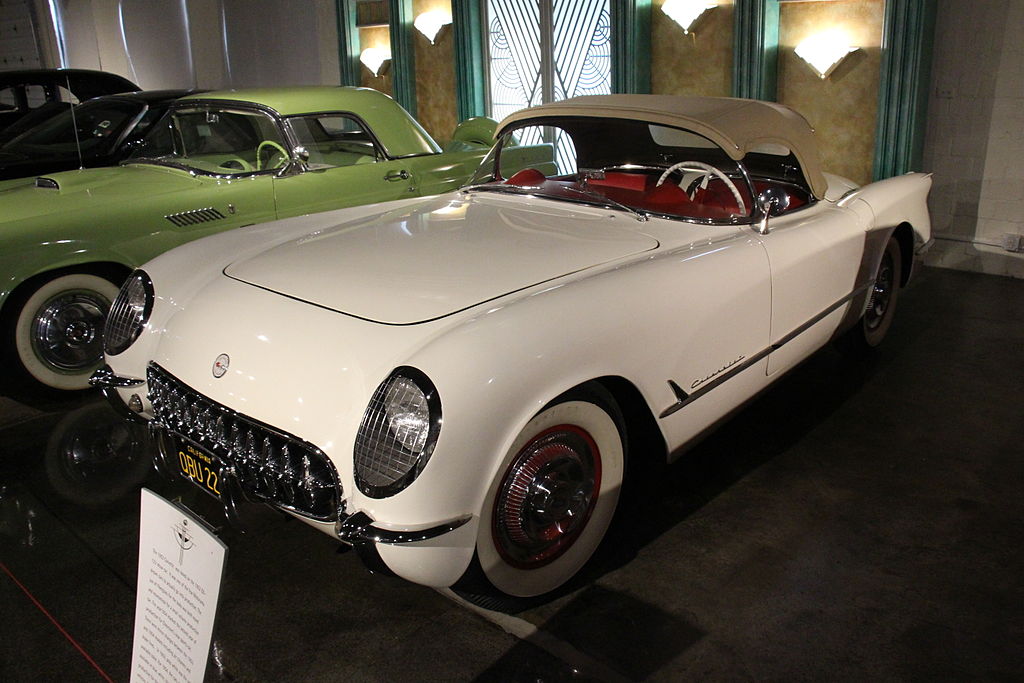
1954: Production Expands
The second year of production saw a significant increase with somewhere near 3,640 cars being produced. In addition to an upsell in cars, the colors customers could get their Corvette in Sportsman Red, Black, and Pennant Blue increased the engine’s output to 155 horsepower.
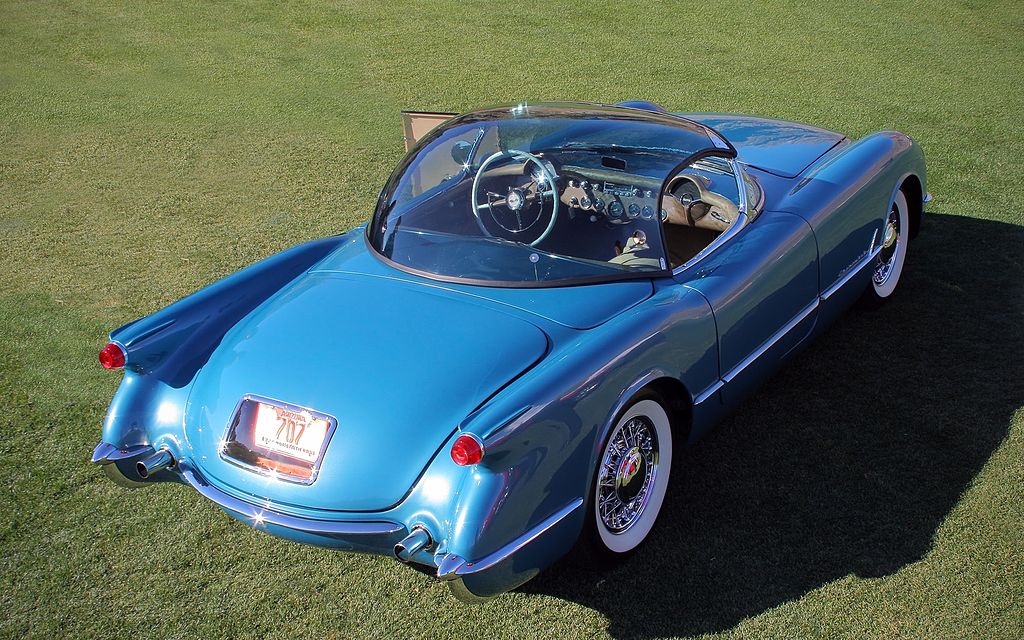
1955: The Introduction of the V8 Engine
1955 was arguably one of the most significant years for the Corvette and set the template for all future Corvettes. This was the year GM put a 4.3-liter small-block Chevy V8 engine under the Corvette’s hood, increasing the power over the six-cylinder to 195 horsepower.
In addition to an upgraded engine, GM fitted the Corvette with a three-speed manual transmission––the first time the car featured anything other than automatic transmission. In the year of 1955, Chevrolet built a total of 700 Corvettes.
New improvements and upgrades arrived in 1956, including a removable hardtop, exposed headlamps, a redesigned exterior that showcased the famous ‘coves’ or sculpted side scoops, and manual roll-up windows. Like the previous year, horsepower was bumped up a few notches––the small-block V8 now accounted for up to 240 horsepower.
The upcoming year would be a significant change for the American sports car.
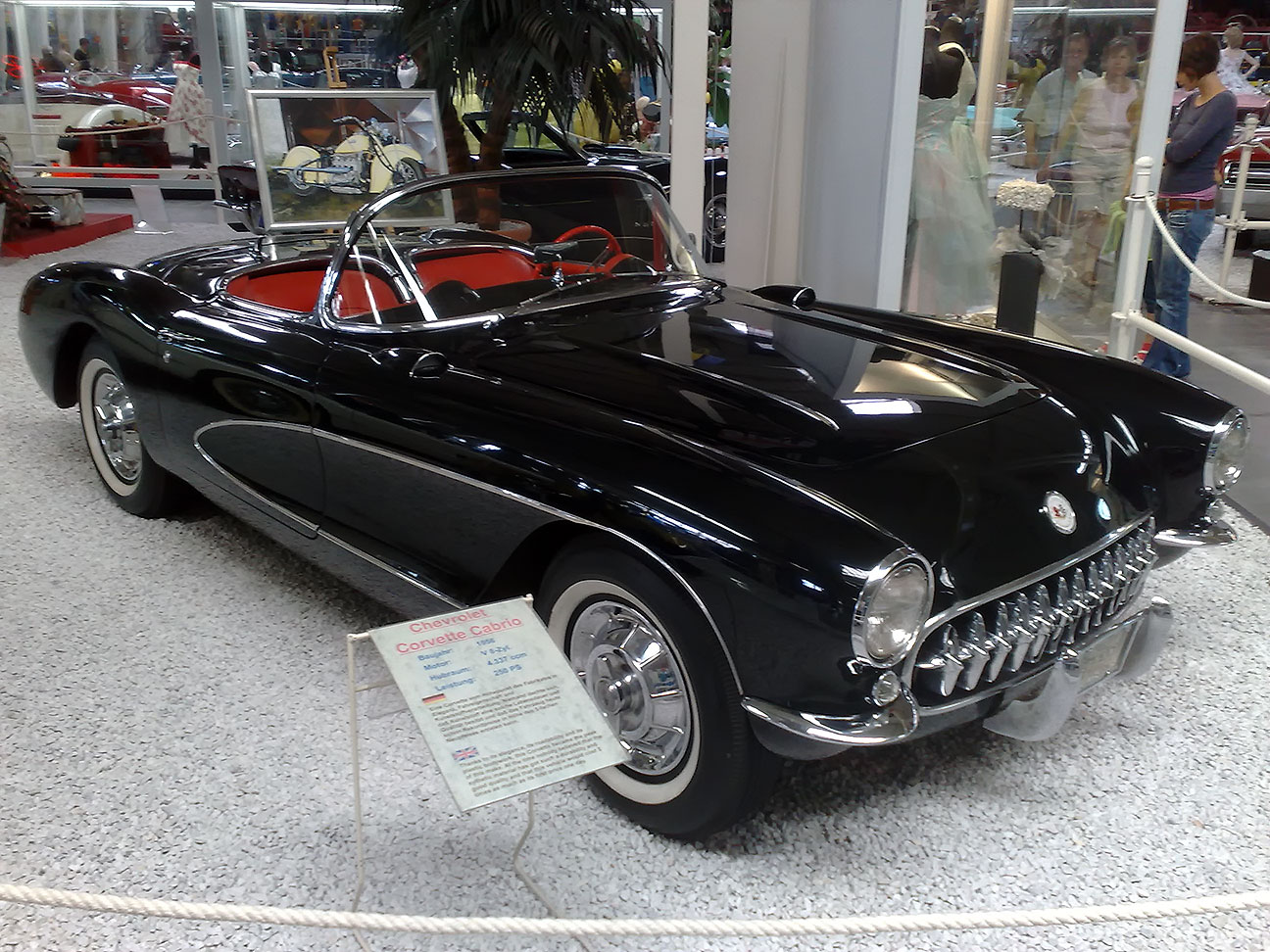
1957: Advanced Technologies
1957 was a big year for Corvette, as it benefitted from yet more advanced technology, including optional fuel injection and a limited-slip differential. An upgrade to the car’s V8 engine made for around 290 horsepower––increasing the car’s overall speed to approximately 132 miles-per-hour. This year a new four-speed manual transmission was also introduced.
A noteworthy achievement made by this year’s Corvette was that it became one of the very first mass-produced engines to achieve a resting of one horsepower per cubic inch––something Chevy capitalized on with their “One HP per cubic inch” marketing slogan in 1957.
As far as interior changes go, Chevy offered a tachometer mounted to the steering column on certain models.
This would also be the last year of the iconic ‘Polo White’ color scheme.
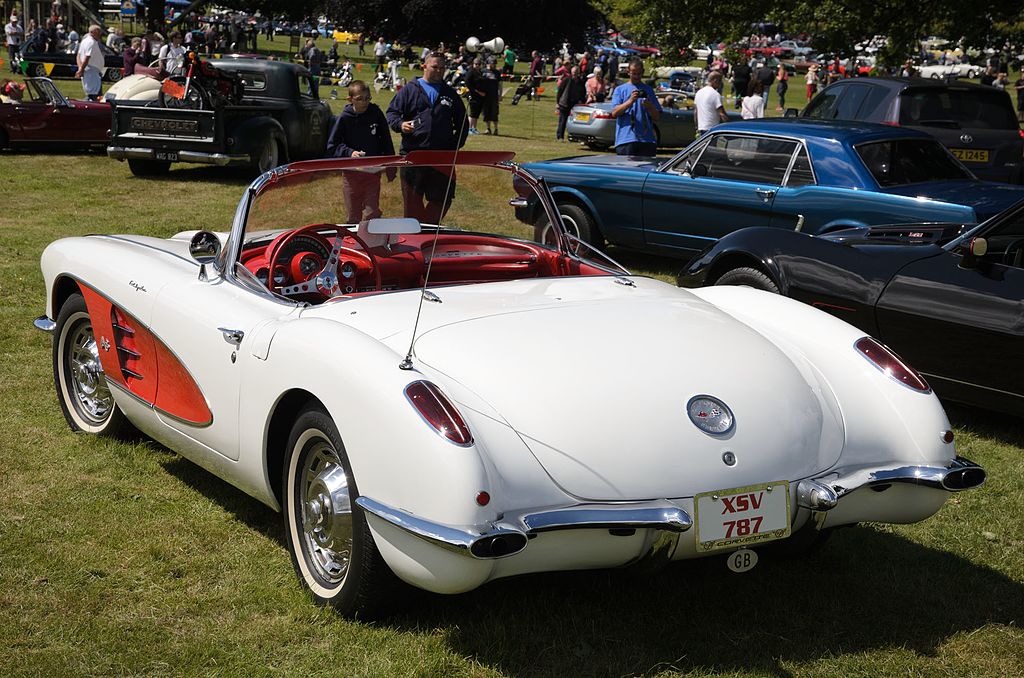
1960: An Established American Sports Car
Just two years shy of the end of the C1 production, Chevy brought out the 1960s model, which came with aluminum radiators and the rarest paint selection: Cascade Green. This model was a clear indication of Chevrolet’s commitment to creating an iconic American sports car. In addition to its growing popularity, the Corvette’s horsepower also continued to grow.
By 1960, the top power rating for the optional RamJet fuel-injected 283 small-block V8 had risen to 315 horsepower––an unrivaled feat at that time.
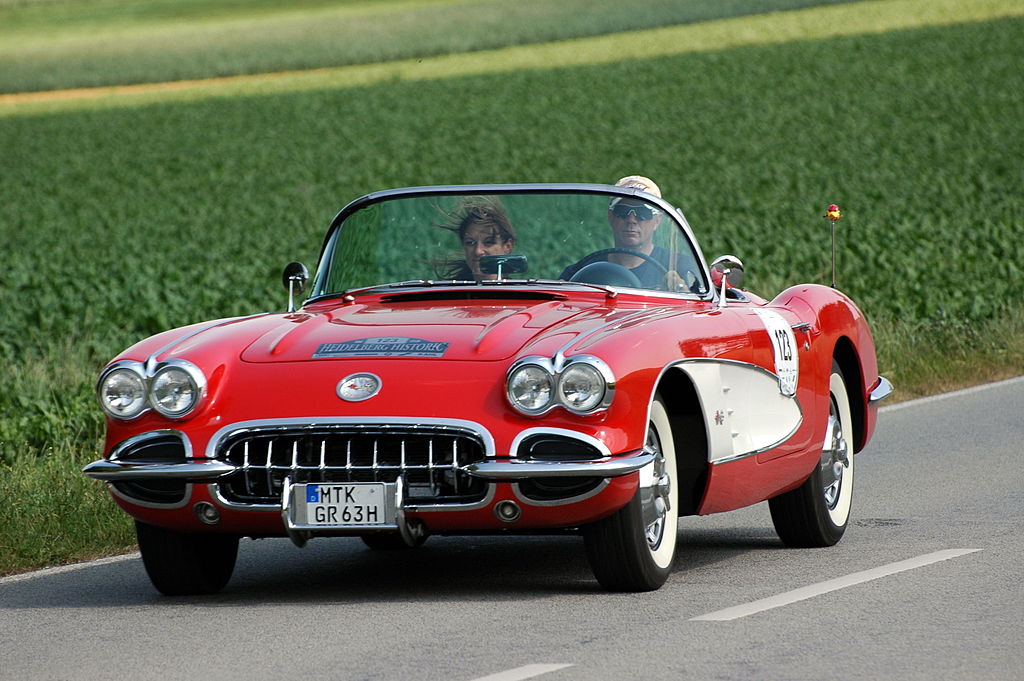
1962: Production Ends
Many saw 1962 as a transitional period for the Corvette––with the second-generation now just one model year away. Over a decade, the Corvette had evolved from designer Harley Earl’s conceptual two-seat sports car to a vehicle that rivaled sports cars globally with a reputation of high-class performance and momentum.
